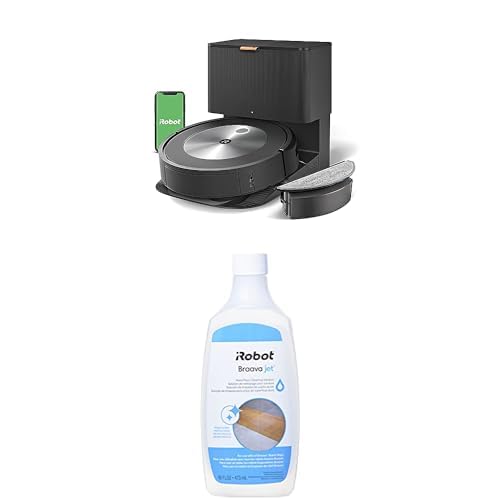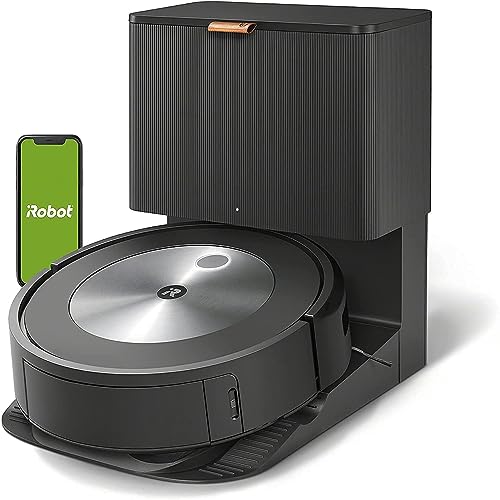10 Things That Your Family Taught You About Robot Vacuum With Self Emp…
페이지 정보

본문
 A Robot Vacuum With a Self-Empting Base Adds Value
A Robot Vacuum With a Self-Empting Base Adds ValueA self-emptying vacuum base is a great option to add to your robot vacuum. It's hands-free, which is particularly useful for people with allergies since touching dirt or pet hair isn't ideal.
It also results in less emptying which could help you save a lot of time. However, it does have its disadvantages.
1. Easy to empty
Many robot vacuums have dustbins that have to be manually emptied at the end of each cleaning cycle. This isn't a problem for many however those with allergies or simply do not have the time keep up with emptying the bin will appreciate a base that self-empty. These modern versions of robots are paired with docking stations designed specifically to independently clean and empty the trash from their storage bags.
They are less likely to release fine dust particles into the air, which means you don't have to worry about dust getting on your hands as you get the robot out. They're also designed to be more durable and robust, with a large capacity to hold a lot of dirt and debris in between emptyings.
The downside of a robot that has a self-emptying base is that it tends to cost more than the ones that do not have one. Although the price range for this technology has expanded as more brands have offered it, it adds significantly to the total cost. Before deciding if the added function is worthwhile, it's important that you consider the advantages and disadvantages.
It all boils down to what each person wants and needs. For those who suffer from allergies or just want to reduce time, a vacuum with a self-emptying base is worth the cost. However, those on a budget or with not plenty of space in their homes will probably want to go with one that doesn't come with this feature. In this instance the basic robot vacuum is sufficient for most homes. This is especially useful in areas that are prone to a lot of dust like kitchen floors, where bits of food will surely fall.
2. You'll need less effort to do your front
Robot vacuums are quite efficient in removing small messes and debris throughout the home. However, the dustbins that they are attached to have limited capacity and need to be empty after every cleaning run. This can be somewhat of a chore when it is used frequently. A self-emptying base for your robot vacuum is an excellent feature. This feature lets you eliminate the dustbin entirely and simply connect the robot to a huge storage bin that it can automatically clean and empty when it is full. This system will save you time and energy, and can stop clogs from causing your robot to smell and lose suction.
Self-emptying can be beneficial if you have kids or pets at home who may reintroduce dirt and crumbs back into the home. It may also be beneficial those at home with allergies that can be caused by dust or pet hair introductions.
A robotic vacuum with a self-emptying base usually costs more than one without it, but the extra cost is well worth it in our opinion. You will want to make use of voice assistants and create schedules for your robot. Other features to look for include a mapping function, no-go areas (older models use strips that are placed around the area you want your robot to avoid), and real-time tracking via its application.
There are plenty of alternatives for a new robotic vacuum cleaner, but the best one is determined by your requirements as well as your budget. Some of the top-rated robots on the market can even serve as mops, and can perform object recognition, which can help you avoid those irritating wires that can be a nuisance.
3. Fewer interventions required
A vacuum cleaner that automatically empty is a great convenience that makes it worth the cost, particularly for people who are busy and have a lot of work to do. It will reduce the amount of time you'll need to spend emptying the bin and keeping it tidy, which means the robot can be used more often and efficiently in your home.
Most robotic vacuums are able to create 2D maps of the home's layout using sensors like lidar or robot vacuum with self empty base DToF laser (similar to the tech in autonomous cars) which allows them to trace the most efficient path through a home and identify rooms by recognizing furniture types. This lets them navigate through a room quickly and without being confused or lost.
A lot of robots that are entry-level require a lot of attention from their owners. This means regular emptying of their tiny dustbins, detangling brushes and preventing them overstuffing and spitting out the debris once more. This can be a nuisance especially if your house has children or pets. A self-emptying robot base can cut down on the amount of maintenance needed, and increase the life of the robot.
A lot of self-emptying robots have docks that are sturdy and won't move or nudge when the vacuum is positioned on them. This is a huge benefit for those with little storage space in their homes. The downside, however, is that the base itself will be larger and bulkier than a conventional dock. The iRobot Roomba i7 Clean Base is a prime example. It has a footprint of 19.4 inches by 16.5 inches. It could be too large for certain areas. This could be a problem if you plan to keep the base and the robot vacuum with Self empty base outside where it is visible.
4. You will feel less effort on your back
A robot vacuum that empty itself automatically after every cleaning cycle will save you the time and effort to bend down to empty it every time you use it. You can also use it more frequently to keep your home clean.
The more hands-free a robotic vacuum is if you're managing children, work, and other household chores, the more efficient. The problem is that most robot vacuums have tiny dustbins that require you to stop your chores in order to empty them. This can be a major hassle, especially for larger homes with carpeting that is high-pile or furniture that requires careful manipulation to achieve an effective clean.
The iRobot Roomba j7's large base can hold dirt and other debris from many cleaning sessions, which means you won't have to empty it as often as you would with a typical robot. Its navigation is also top-notch which means it is able to navigate around cables and objects that could entrap other robots we've examined.
The best self-emptying robot vacuum way to ensure your robot vacuum stays as clean as possible is by putting away toys, blankets and other junk before it starts. You can program the vacuum to clean at the time that doesn't interfere in your routine, such as the last minute of the day or just after everyone has gone to bed. If your model does not come with the feature of a boundary strip, you can also create the "fling rings" by cordoning off an area using furniture to keep the robot from getting into it.
5. Less noise
The majority of robot vacuums that have self-emptying bases use an internal storage system to store dirt and debris instead of dumping them in your garbage. This prevents dust and dander from being kicked back up into the air where you could breathe it in, which is particularly important for households with allergy sufferers.
This feature allows you to run your robot cleaner much more frequently, as you don't need to stop it mid-clean to empty the trash bin. This is a great feature for busy parents, who may not have the time to vacuum each day.
One of the main disadvantages of a robotic vacuum that has a self-emptying bin is that it will generate lots of noise, particularly when it is moving debris from the robot to its storage system. This can be loud and distracting to children and pets. It could affect your schedule for cleaning, or even make you skip using the robot.
The robot vacuum should be quiet enough to operate in the background without disturbing guests or wake up children. This is especially crucial if you're having your guests over for dinner. We also test the noise level of the vacuum. We prefer a vacuum that makes less than 65 decibels in the typical household setting. The Roborock Miele XV-21 scored excellently in our tests, with a remarkablely low noise level, and its navigation is great for navigating cluttered studio apartments and maneuvering around objects that can easily derail other robots. It uses lidar mapping to clear specific rooms and create digital keep-out areas but it isn't equipped with AI obstacle avoidance. It could get caught up in cables, shoelaces, or socks if you're not careful.

- 이전글10 Things That Your Family Teach You About Upvc Windows Near Me 24.04.29
- 다음글Upvc Repairs Near Me Techniques To Simplify Your Everyday Lifethe Only Upvc Repairs Near Me Trick That Should Be Used By Everyone Learn 24.04.29
댓글목록
등록된 댓글이 없습니다.

